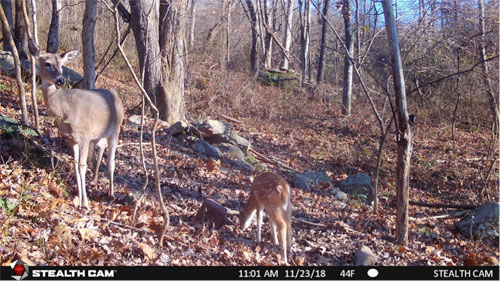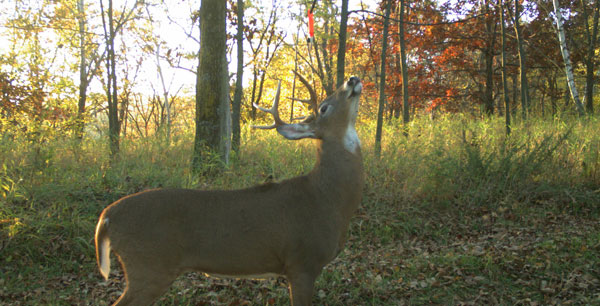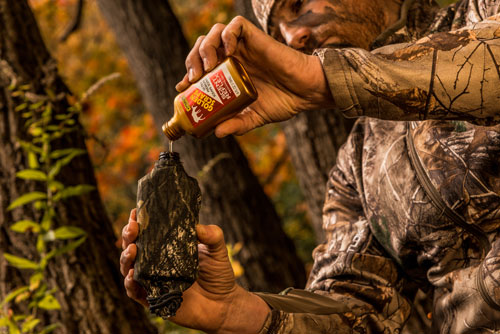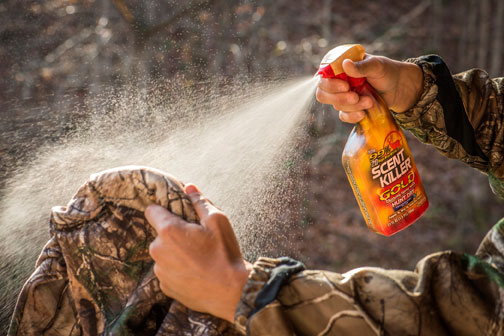Let’s start with the obvious—late-season whitetail hunting can be challenging to say the least. Yes, the deer are still out there, and included among them are plenty of mature bucks that were smart enough to keep a low profile during the frenetic week or two of firearms season.
This is the time of year that most hunters have put away their hunting gear for the season. But, dedicated whitetail hunters understand that the late season presents some unique opportunities. For starters, the woods are quiet once again and the deer have settled down into more predictable sleep-eat-sleep patterns. Second, there are some subtle “rut aftershocks” to be expected as we move through December and into January; mild surges of chasing behavior as unbred mature does (few as those may be) come into another estrous cycle and doe fawns come into their first estrous cycle, and give surviving bucks a reason to get out of bed in the late afternoon.
As we all know, whitetails in the Northern regions of the continent do their breeding from October through December, with early November being the peak of the rut across most of the country. This is because whitetails are “short-day breeders,” which means that the estrous cycle is keyed to shorter daylight hours. The reason for this is simple. Since the gestation period of whitetails is around 200 days, this reproductive period ensures that does bred during late fall and early winter will give birth to fawns when there is plenty of food available and the temperatures are warm enough to minimize fawn mortality, plus ensure that they are in good physical shape for the upcoming winter. Thus, most deer are born between May and July, which follows the gestation period for does bred in October through December.
The thing to remember, however, is that while there is a definite peak of rut activity around the first through third week of November in much of the country, the rut doesn’t turn on and off like a water faucet. There is a ramping up of rut activity from late September through October, as well as a tapering off of rut activity following the average peak of whitetail breeding around November 10. So, the rut doesn’t suddenly end in November, it just drops off. It is this later rut activity, so to speak, that the late-season hunter needs to be aware of.
Doe fawns, for example, are capable of breeding at 6 months of age if they have achieved enough body weight (typically around 70 pounds). Those that are born early enough can therefore come into estrous within their first year—usually not until December or January. When that happens, these fawns will produce estrus scent that mature bucks will key in on—just as mature does do a month or two earlier.
Similarly, mature does that were not bred during the peak rut period in November will go back into estrus the following month. While that doesn’t happen often (nature has a way of ensuring the vast majority of receptive does are bred when they are supposed to), it absolutely does happen.

Here is a prime example of why nature has so exquisitely timed the whitetail breeding season. This doe and fawn showed up on the author’s trail camera on November 23. Note the spots on the fawn. Given a whitetail fawn’s 200-day gestation period and that it takes around three or four months for a fawn’s spots to disappear, this little one was probably conceived late the previous winter or in early spring—proof that does not only can miss prime breeding, but that they can be successfully bred far beyond the peak rut. (Author photo)
Why? Some claim it’s a result of the buck-to-doe ratio being out of kilter and not enough bucks to breed all of the does during that brief window of doe reproductive fertility. Others claim that not every doe is ready to be bred, causing them to miss the peak rut and instead come into estrus in December, January, February or even later. Regardless, the fact is that breeding activity does, at some level, continue throughout and sometimes beyond the traditional hunting season. So the smart hunter knows that the chance of taking a mature buck isn’t over until it’s over.
So, what is the best hunting strategy this time of year? Obviously, things aren’t the same as they were in October and November. With testosterone levels down and the need to build up fat and nutrients for the winter, bucks aren’t running crazy through the woods. They are resting more and trying to fill their bellies when the sun goes down. They’re also quite educated after being pursued for the last few months by hunters. In short, their patterns are like that of the area does, which is content to rest much of the day and move toward high-quality feeding grounds in the evening. Bedding-to-feeding areas are always high-probability bets for placing a stand throughout the hunting season, but now it is even more so since the wanderlust has worn off both bucks and does.
To turn this to your advantage, locate the hottest feeding areas—usually crop fields now that most of the hard mast is gone—and set your stand back in the cover near the entry points. Now, rather than hope for a random-chance encounter with a buck, it’s time to redeploy the scents that you used earlier in the year. We’re talking estrus scent, such as Special Golden Estrus or Golden Estrus Xtreme. The idea is that although bucks are not chasing does now that the main rut is over, they will absolutely respond to the scent of a doe in heat. A buck that has been around a few seasons knows that he can still get lucky even this late in the game.
Another tactic to help boost your odds is to add intrigue to your hunting area by freshening up a scrape or two. Scrapes that have gone dormant for several weeks can become a happening once again if you give bucks a reason to visit. Load a Magnum Scrape Dripper with some Golden Scrape, stir up the ground below the licking branch and hang the dripper overhead.
The other key thing to remember, regardless of what scent strategy you use, is to not go soft on your scent elimination practices. After months of encountering hunters, it only takes a bit of human scent to put deer to flight, so maintain your scent-management system. Wash yourself and your clothes in scent-elimination soap and spray down your boots, clothes and gear in a proven formula such as Scent Killer Gold before you head into the field.
Sure, the best rut action is over and the challenge of getting within bow range of deer is significantly greater during this time of year. Nevertheless, the late breeding activity that occurs in December and into January does produce some minor bumps throughout the rut’s tapering-off period. By zeroing in on late-afternoon feeding areas where the does congregate, deploying estrus scent and maintaining scent-free vigilance, late-season hunting can be highly productive for those surviving bucks. Plus, you will pretty much have the woods all to yourself.
— PAID PARTNER CONTENT. This content is brought to you by a D&DH advertising sponsor.




